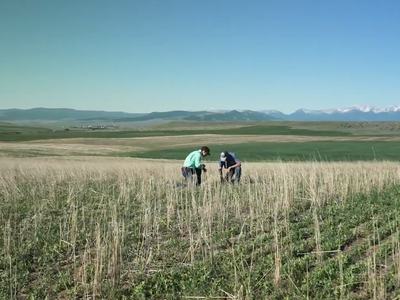BRSV Part 2
BRSV Part 2. I’m Greg Martin with today’s Line On Agriculture.
Cattle can get what is essentially cow pneumonia. It’s called bovine respiratory syncytial virus and Pfizer’s Dr. Greg Edwards says any bovine is susceptible to the virus.
EDWARDS: With the name bovine respiratory syncytial virus this exact virus can occur in any of the bovine species. It is adapted to that species. Now humans may also get a respiratory syncytial virus and it’s called RSV in humans. They’re different. Same family of viruses but the bovine respiratory syncytial virus will not infect the human and the RSV of humans will not infect the bovine. So it is present in both beef and dairy cattle and there’s a study that was published I believe in 2009, a survey of the U.S. and said that it affected up to 70% of the dairies in the United States.
It is the number one respiratory virus as far as exposure in cattle. Pfizer has developed an intra-nasal vaccine called INFORCE™ 3. Edwards says it is different than an injectable vaccine.
EDWARDS: With an injectable vaccine we stimulate the entire body and we get a response from the immune system. When we use the intra-nasal vaccine we are stimulating a response that is more local, in this case in the respiratory passages. Not as potent, not as all encompassing in the body. We don’t get a long duration. We’re not quite as concerned about how long does this work because this works more rapidly to stimulate the immune system. Therefore we use this in risk periods of exposure to get a quicker response but yet a shorter duration so that we can follow up later with an injectable.
Calfs are especially susceptible to BRSV when their mothers are breathing on them immediately after birth and Edwards says the quick response of the INFORCE™ 3 is very beneficial at that time. For more information be sure and visit their website at pfizer.com.
That’s today’s Line On Agriculture. I’m Greg Martin on the Ag Information Network.

















